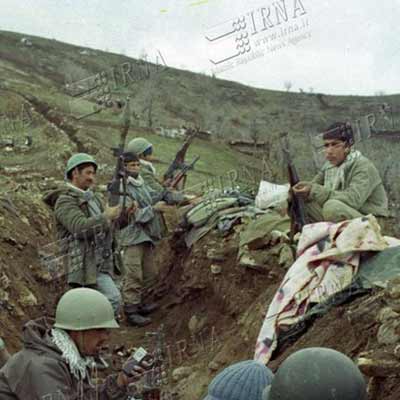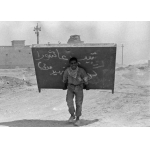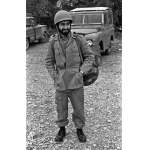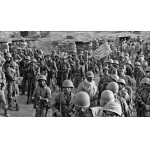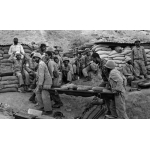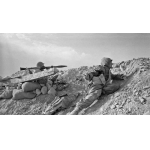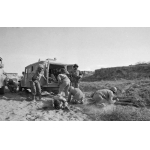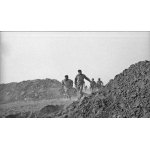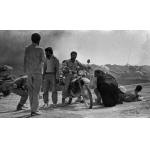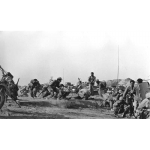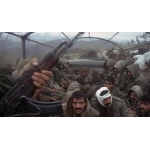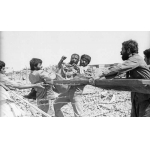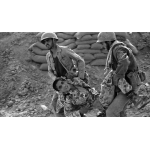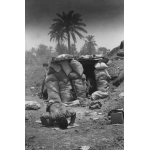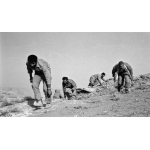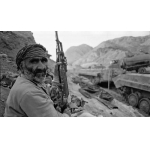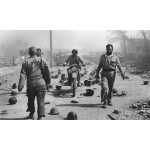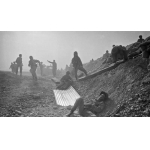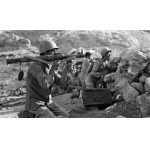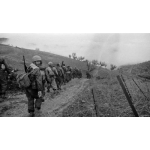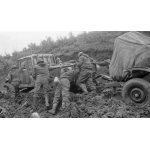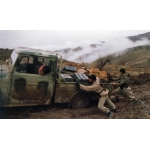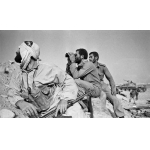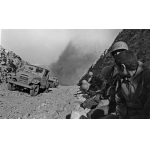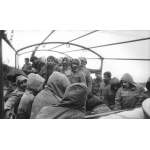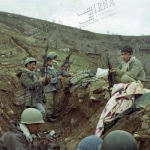Operation Wal-Fajr-9
Fatima Danesh-Shakib
214 بازدید
Iran's Islamic Revolutionary Guard Corps carried out Operation Fajr-9 in 1986, in the northwestern region of Marivan in Kurdistan Province. It intended to surprise the Iraqis by advancing towards Sulaymaniyah, Iraq.
After Operation Fajr-8 (February 10, 1986, in Faw) and the deployment of Iranian forces in Faw, Operation Fajr-9 was designed to liberate the snow-covered and impassable heights of Sulaymaniyah[1] and to reduce the pressure of the Iraqi army on Iranian forces in the Faw area.[2] Operations from several axes and the division of Iraq's forces reduced the effectiveness of their technological tools and prevented the concentrated defense of their forces in one axis.[3]
Operation Fajr-9 started on February 25, 1986, at 23:45 with codename "Ya Allah", and continued until March 1.[4]
This operation was conducted by IRGC Ground Force units under the command of the Najaf Base, and commander Mustafa Yazidi, in Kurdistan, Iraq, The operational area was about 270 km north of Baghdad, 95 km northwest of Kirkuk and 22 km from Sulaymaniyah.[5]
The Iranian forces operating in Operation Fajr-9 included twenty-five infantry battalions, one armored battalion, four artillery battalions, while the Iraqi forces included eight infantry battalions, one armored battalion, one commando battalion and two artillery battalions.[6]
On the first night of the operation, Iranian forces attacked the Iraqi forces after crossing the minefields, which led to the destruction of the trenches and the retreat of the Iraqi forces.[7] At the end of March 6, several villages, the Choman area (place of anti-revolutionary forces), and the Surdin Outpost fell into the hands of the Iranian forces.[8]
On the second night, an attack was launched to capture an area of about 600 square kilometers in the high lands overlooking the Sulaymaniyah Road and some other mountainous areas. Iranian forces were also able to besiege the city of Chuarte. In this way, Chuarte and some vital heights in this valley, twenty kilometers away from Sulaymaniyah, fell into the hands of Iranian forces. Iraqi forces, in response to this, began using chemical weapons.[9]
On February 19, the third stage of the operation was carried out. At this stage, a lot of equipment, including dozens of tanks and personnel carriers, was seized by Iranian forces. In addition, parts of the snow-covered heights of Sulaymaniyah were captured by Iran.[10]
Three days after the start of the operation, Saadi Tomeh al-Jubouri, the deputy of the army headquarters and the commander of the Iraqi 7th Corps, announced that the conflict is ongoing on all fronts and that the Iranians have gained a foothold in the northern front.[11]
On the fifth day (February 19, 1986), Iranian forces captured the heights of Shurozah and some other villages and settled twenty kilometers away from the city of Sulaymaniyah. Additionally, the heights of Kana, Shah Koran, Tange Sur, Mobra, Makhlan, Kani Maran, Saro and heights 1470 and 1489 were captured by Iranian forces.
One plane, one helicopter, twenty tanks, ninety cars, ten anti-aircraft guns, and a large amount of Iraqi light and medium weapons were destroyed. Also, a large amount of light and medium weapons and various types of ammunition were seized.
In this way, on March 1, Operation Fajr-9 ended. Iranian forces took control of the Sulaymaniyah-Chuarta Road and occupied two hundred kilometers of Iraqi territory.[12] In this operation, 1500 Iraqi forces were killed or wounded and 134 were captured.[13]
Before this operation, Iraq did not have a major force in this region. But after it, they made great efforts to recapture the areas under the control of the Kurds and block the access routes that went deep into Iraqi territory.[14]
After the operation, the captured areas were handed over to the Islamic Republic of Iran Army and, due to the importance of maintaining the areas obtained in Operation Fajr-8, the operating units were sent to Faw. Desperate to recapture Faw, Iraq launched an attack on the Fajr-9 operational area on March 18, 1987. The Iranian forces stationed in the area were forced to retreat to their previous positions due to the lack of forces and the intensity of the enemy’s pressure.[15]
Operation Fajr-9 showed that opening two fronts against the Iraqi army, at the same time, will divide their power, making them unable to fight on two fronts. This was while the commander of Iraq's 7th Corps had said after the start of Operation Fajr-9: "The possessions that Iran may gain in the north are not important. If the Iranians think that their advance in the north will reduce their difficulty in Faw, they are wrong.”[16]
[1] Samii, A., Descriptive record of the operations of Islamic warriors during the eight years of holy defense, Tehran: Vice-Chancellor of Propaganda and Publications of Vali Faqih Representation in Ground Forces, 1997, p. 238.
[2] Sadeghi, R., Guide Atlas 9: Kurdistan in the war against insurgency, Tehran: Islamic Revolutionary Guard Corps Sacred Defense Documentation and Research Center, 1911, p. 140; Rashid, Mohsen, Iran-Iraq War Atlas, Tehran: Islamic Revolutionary Guards Corps Center for War Studies and Research, Ch 1, 2000, p.91.
[3] Drodian, M., A Review of the Iran-Iraq War, Vol. 2: Khorramshahr to Faw, Tehran: Center for War Studies and Research, Ch. 5, 1999, p. 229.
[4] Samii, A, Descriptive record of the operations of Islamic warriors during the eight years of holy defense, Tehran: Deputy of Propaganda and Publications, 1999, p. 238; Sadeghi, Reza, Guide Atlas 9, p. 140.
[5] Hashemi Rafsanjani, A. A., career and memories of 1986; Omid and concern, Tehran, Maarif İnglaeb publishing house, 2018, p. 514; Sadeghi, R., Guide Atlas 9, p. 140.
[6] Dari, Hassan, Guide Atlas 5: Record of Land Battles, Tehran: Islamic Revolutionary Guards Corps War Studies and Research Center, 2001 p.138.
Samii, A., Descriptive record of the operations of the warriors of Islam during the eight years of holy defense, p. 238.
[7] Samii, A., Descriptive record of the operations of the warriors of Islam during the eight years of holy defense, p. 238.
[8] Ibid, p. 239; Newspaper of the Islamic Republic, 1959, February 18, 1986, p. 2.
[9] Hashemi R., A. A., career and memories of 1985; Hope and worry pp. 514 and 516.
[10] Samii, A., Descriptive record of the operations of the warriors of Islam during the eight years of holy defense, p. 240.
[11] Journal of the Islamic Republic, 1961, March 1, 1986, p. 2.
[12] Samii, A., Descriptive record of the operations of Islamic warriors during eight years of holy defense, pp. 241 and 242.
[13] Sadeghi, R., Guide Atlas 9, p. 140.
[14] Drodian, M., A Review of Iran-Iraq War, Vol. 4: Shalamcheh to Halabcheh, Tehran: IRGC War Studies and Research Center, 7th quarter, 2009, pp. 183 and 184.
[15] Drodian, M., A Review of Iran-Iraq war, vol.2, p.238; Sadeghi, Reza, Guide Atlas 9, p. 140.
[16] Rashid, M., Iran-Iraq War Atlas, p.91.


